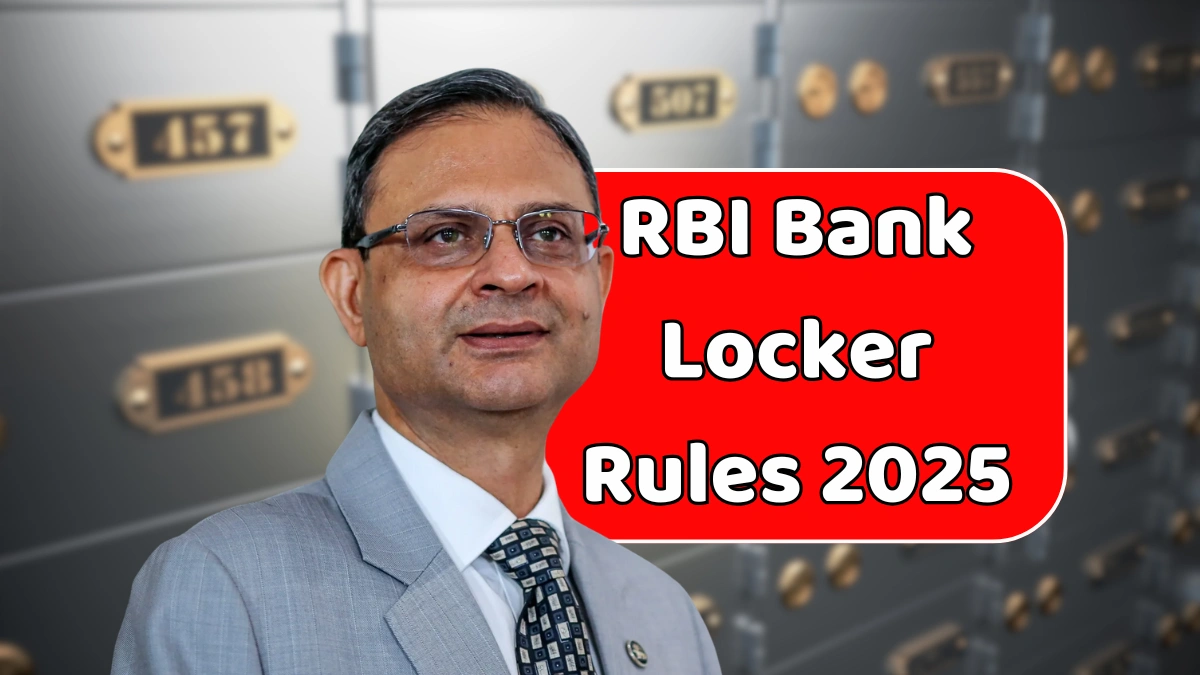The Reserve Bank of India (RBI) has announced new bank locker regulations for 2025 to make locker operations safer, more transparent, and customer-friendly. These updated rules address key concerns such as security, liability, and pricing, ensuring better protection for both banks and customers.
Mandatory Locker Agreements
From 2025 onwards, all locker holders must sign a revised locker agreement with their respective banks.
This agreement will clearly outline the rights and responsibilities of both parties. Customers will receive a copy of the agreement either in physical or digital format, ensuring complete transparency in locker management.
Security Enhancements
To strengthen safety measures, banks are now required to:
- Install biometric access systems for locker operations.
- Maintain 24×7 CCTV surveillance in locker areas.
- Store CCTV footage for a minimum of 180 days.
- Send instant SMS or email notifications to customers each time their locker is accessed.
These steps provide an added layer of security and accountability for every locker transaction.
Compensation Policy
If valuables are lost or damaged due to bank negligence, fraud, or security lapses, the bank will be held liable to compensate the customer.
The compensation amount can go up to 100 times the annual rent of the locker.
However, banks will not be held responsible for losses arising from natural calamities, customer negligence, or unauthorized access by the locker holder’s nominee or representative.
Pricing and Charges
Locker rent will now vary based on size and branch location. Urban branches will typically have higher annual fees than rural ones.
| Branch Type | Old Annual Rent (Approx.) | New Annual Rent (2025) |
|---|---|---|
| Metro / Urban | ₹1,500 – ₹8,000 | ₹2,000 – ₹10,000 |
| Semi-Urban | ₹1,000 – ₹5,000 | ₹1,500 – ₹7,000 |
| Rural | ₹800 – ₹3,000 | ₹1,000 – ₹5,000 |
Bank Locker Rules 2025 – At a Glance
| Feature | Old Rules (Before 2025) | New Rules (2025 Update) |
|---|---|---|
| Locker Agreement | Not standardized | Mandatory revised agreement for all users |
| Security Measures | Limited CCTV | Biometric access + 24×7 CCTV + instant alerts |
| Compensation for Loss | Unclear liability | Up to 100× annual rent if bank at fault |
| Annual Rent | ₹1,500 – ₹8,000 | ₹2,000 – ₹10,000 depending on size & location |
| Prohibited Items | Not enforced strictly | Ban on cash, arms, explosives, or hazardous items |
Items Allowed and Prohibited
Customers can store:
- Jewelry, property papers, insurance documents, and confidential files.
Items strictly prohibited include:
- Cash, weapons, explosives, narcotics, and hazardous materials.
If such items are found, the bank has the right to terminate the locker service immediately.
Final Thoughts
The RBI Bank Locker Rules 2025 have made locker operations far safer and more transparent. With biometric entry, real-time alerts, CCTV monitoring, and defined compensation guidelines, customers can now rely on a more secure and trustworthy banking system.
Although rental charges have slightly increased, the enhanced security, accountability, and protection make these new regulations a win-win for both banks and customers alike.
Disclaimer: The information above is based on the official guidelines released by the Reserve Bank of India (RBI) and verified banking sources. Customers should contact their respective banks for specific terms and updated locker rent details.





